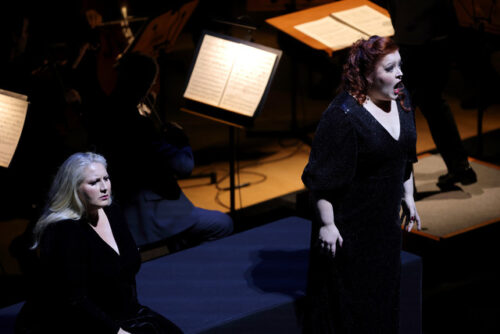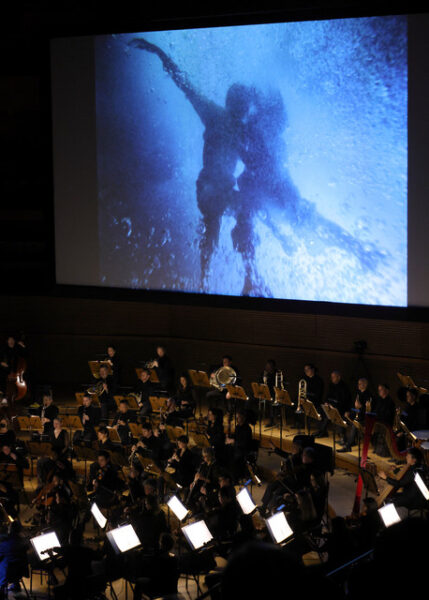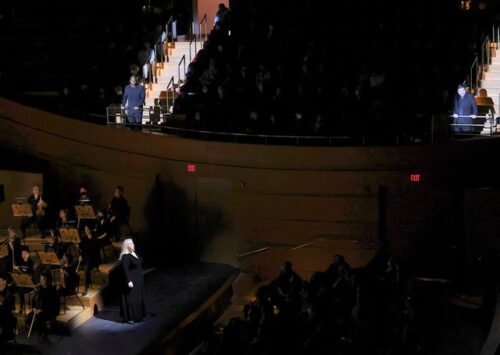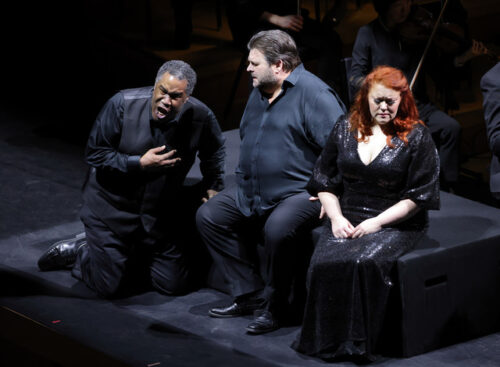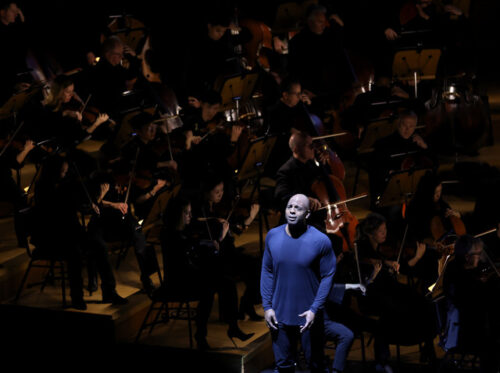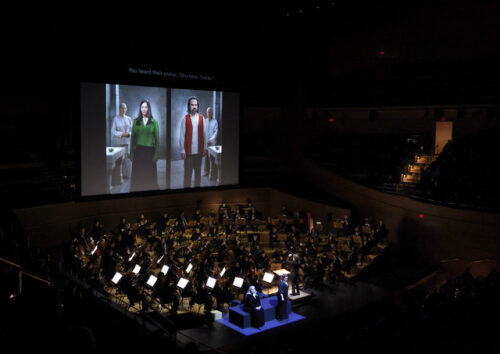A PROJECT MORE THAN A COHESIVE OPERA
The heavily hyped revival of director Peter Sellars’ and video artist Bill Viola’s production of Wagner’s monumental opera Tristan and Isolde has landed at Disney Hall with a whimper rather than a bang.
In Wagner’s own vision, his operas were to be staged as a “total artwork” (Gesamtkunstwerk), a theater that’s unified, with text, music, design, choreography, and casting all serving one purpose; form should follow function, the function defined as the communication of the artistic ideal.
In this staging — titled The Tristan Project — Viola’s video art features two actors who play Tristan and Isolde in a slow-moving tone video poem. Rather than showing the narrative, Viola’s glacially paced video is filled with heavy symbolism, showing the star-crossed lovers slowly disrobing, moving through fire, immersed in water, and melting into a simple image. At the same time, Mr. Sellars’s gimmicky staging puts the singers — and in one instance the horn section — in different parts of the hall. The effect was disconcerting as I was too often forced to shift my view between the singers, the video, the projected supertitle, and the orchestra.
Peter Weinius has the required vocal chops for Tristan. He is an accomplished heldentenor with impeccable articulation and diction. His acting was wooden, but that may have been a directorial choice. A miscast Miina-Liisa Värelä, playing Isolde, is a dramatic soprano without the necessary lung power to sing in a large hall. She did, however, do her best to chew the non-existent scenery as a woman ruled by her passions and not by her head.
In the supporting role of Tristan’s servant Kurewal, Metropolitan Opera star Ryan Speedo Green did not disappoint. As in LA Phil’s Fidelio, Green stole the show with his passionate acting, deep bass voice, good looks, and sexy masculine stage presence. Mezzo-Soprano Okka von der Damerau as Bragane, Isolde’s maid, was exemplary with beautiful strong tones and passionate acting. Opera veteran Eric Owens as King Marke sounded suitably weathered as old King Marke.
Wagner’s score is considered a landmark in the history of western classical music, having broadened the boundaries of tonality and revolutionized orchestration by coming up with new approaches to orchestral color, harmony, and polyphony. In his conducting of the score, Gustavo Dudamel emphasizes the monumentality of the piece, producing a big glorious sound that unfortunately overpowered some of the singers, notably Ms. Värelä.
By breaking the piece over three nights and having video projections that are competing with the singers, this production fails to create a unified whole. As with Fidelio, the LA Philharmonic fails to make the case for successfully presenting semi-staged operas. I hope that LA Opera will revive its’ 2008 Tristan & Isolde production in a future season so LA audiences get a chance again to watch a full evening of a fully staged, coherent production.
photos by Mathew Imaging/Los Angeles Philharmonic Association
The Tristan Project
Gustavo Dudamel, LA Phil, LA Master Chorale
ended on December 17, 2022
for info, call (323) 850-2000 or visit LA Phil


